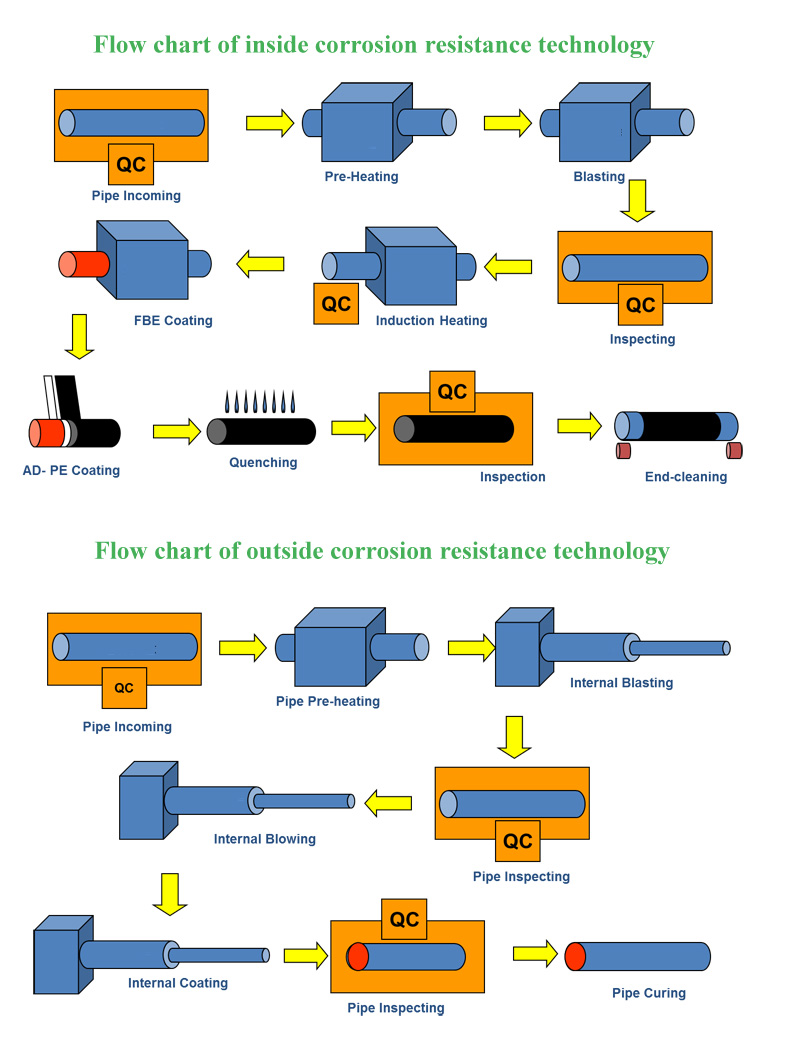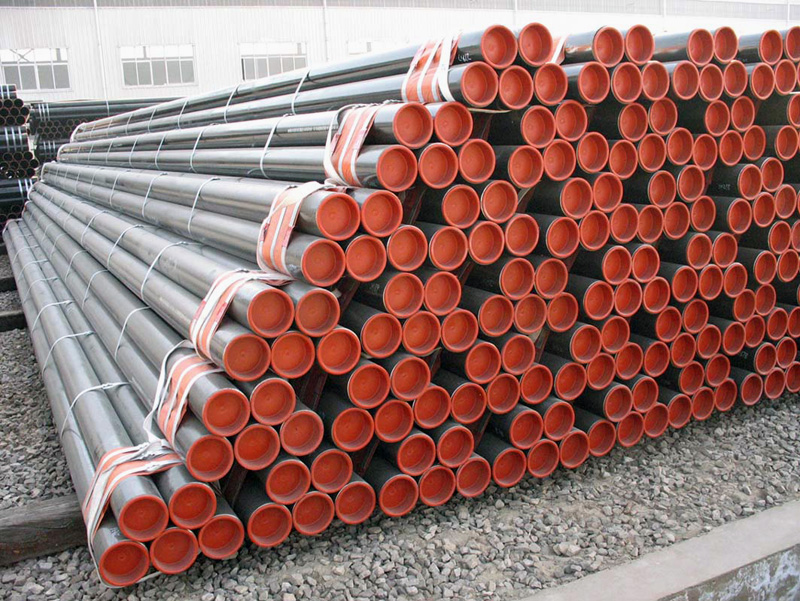Anti-corrosion process for line pipes
What is pipeline corrosion and anti-corrosion coating?
As we all know, pipelines that transport oil, gas, chemicals and petroleum products are of crucial significance to the country economy. Therefore, the performance and maintenance of the pipelines are vital in the process. However, buried pipelines are easy to subject to corrosion attack if it is exposed to a wet environment. Pipeline corrosion refers to the deterioration of the pipes due to its interaction with the surrounding environment. It negatively affects the integrity and longevity of the pipelines. Thus, anti-corrosion protection is the top issue to consider in oil and gas industry. One of the best ways to control pipeline corrosion is anti-corrosion coating. Coating is a method to isolate pipelines from corrosion attack. Corrosion can be greatly minimized by selecting the right coating.
Internal and External Anti-corrosion Pipeline Coating
The internal and external area of the pipe can both be corrosive because of different factors. The external pipeline corrosion can mainly due to the surroundings, such as acid soil, wet conditions and so on. Factors that lead to internal corrosion are the oxygen content, temperature, pressure and flow rate of the liquid carried in the pipelines. Due to the above reasons, the anti-corrosive pipeline coating can be put into two corresponding categories, the internal and external corrosion-resistant coating.

Main Types of Anti-corrosion Coating Technology
Considering the various applications and complicated working conditions of pipelines, corrosion resistant coatings are designed and manufactured using different technologies and materials.

Fusion Bonded Epoxy Coating (FBE)
Fusion Bonded Epoxy, also known as thermosetting coating, is an epoxy-based powder coating widely used to protect pipelines from corrosion. Under normal temperatures, resins in the powder coating do not react. However, when the temperatures reaches to 250℉ the power begin to melts into fluid, flow onto the pipeline surface, and quickly stick to the pipe, forming a solid coating. This process contributed by heat is called "fusion bonding".
Dual-layer FBE Coating
Dual-layer coating refers to the use of a second layer of FBE that overcoats the first layer----the anti-corrosion coating. The second layer is applied directly on the first layer to protect the pipeline from abrasion.
Three-layer PE/PP coating (3LPE or 3LPP)
Three-layer PE/PP is one of the most widely used anti-corrosion coatings in the field. As the names shows, it consists of three layers---the first layer FBE coating bonded to the PE or PP (polyethylene or polypropylene) topcoat using a co-polymer adhesive as the second layer coating. The FBE layer resists oxygen passage while the PP layer prevents water passage, greatly improve the anti-corrosion efficiency. The adhesive layer, which combines the FBE and topcoat together, assists in protecting the coating integrity and prolonging the coating’s service life.
 What’s New?
What’s New?


